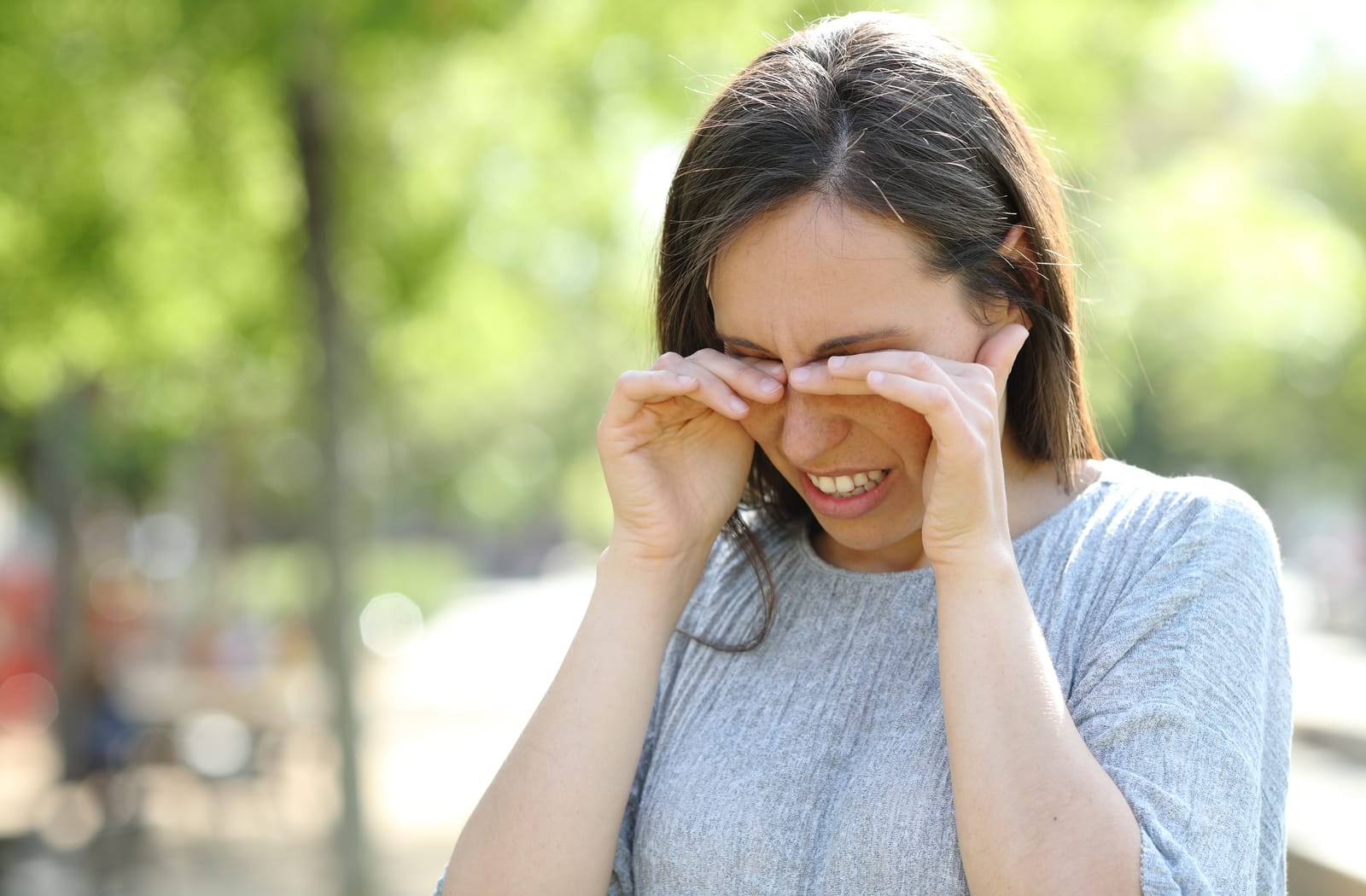When you have dry eyes, how do you know what is causing them? The symptoms of dry eyes are similar to allergic conjunctivitis, a form of eye inflammation caused by allergies. These conditions have similar symptoms, but they have different causes and require different treatments.
If you have allergies and experience dry eyes, what is causing this, how do you relieve your symptoms, and how can you prevent future irritation? Consider this your guide to dealing with dry eyes from allergies.
Dry Eye from Allergies: What is It?
Eye discomfort can mean many things, and it can be difficult to determine if you’re experiencing dry eye disease or allergies. Eye allergies can lead to dry eye syndrome, but they are different despite having similar symptoms.
Eye allergies are also known as allergic conjunctivitis, inflammation caused by an allergic reaction. The conjunctiva, a membrane lining the eyelid and covering the white of the eye, becomes irritated and inflamed after coming into contact with allergy triggers.
There are different types of allergic diseases affecting your eyes, including:
- Perennial or seasonal allergic conjunctivitis
- Contact allergic conjunctivitis
- Giant papillary conjunctivitis
- Vernal keratoconjunctivitis
- Atopic keratoconjunctivitis
Each allergic disease is different, but they all cause eye inflammation, leading to discomfort and reduced quality of life. Allergic conjunctivitis has several irritating symptoms you may experience.
Allergic Conjunctivitis Symptoms
When allergies dry out your eyes, you may experience some of the following symptoms:
- Itchy eyes
- Redness
- Watery discharge
- A burning sensation
- Swelling
According to the National Eye Institute, some people may experience light sensitivity. Your symptoms may depend on the type of allergy causing your inflammation. Symptoms of seasonal allergies like a runny nose or sore throat may present alongside dry eye signs.
Symptoms typically affect both eyes, and discharge may be similar to mucus, depending on the type of allergic disease you’re experiencing. Many different allergy triggers can irritate your eyes.
Causes of Allergic Conjunctivitis
Dry eyes may happen for several reasons, but allergic conjunctivitis occurs when an allergy trigger enters your eye. Depending on the type of allergies you have, you may only be at risk of encountering irritants during certain seasons, or they may be present year-round.
Some potential allergy triggers include:
- Pollen
- Pet dander
- Mould
- Perfume
- Dust mites
- Diesel exhaust
- Cigarette smoke
Seasonal allergic conjunctivitis is more likely during the spring and early summer due to mould spores or tree, weed, and grass pollens. Weed pollen is common during the late and early fall. Triggers like pet dander and dust mites typically present a risk year-round.
While allergies can cause dry eyes, how do you know what is causing your issues? Several different factors can contribute to dry eyes, but there are significant differences between dry eye disease and allergic conjunctivitis.
What is the Difference Between Dry Eye Disease & Dry Eye from Allergies?
While dry eye symptoms and allergic conjunctivitis can lead to red, irritated eyes, they are different conditions needing specific care. How can you tell if you’re having allergy symptoms instead of dry eye symptoms?
Allergies irritate your eyes, and a significant symptom is itching and swelling. Dry eye can cause many irritating symptoms, but itching is not one of them. If you have itchy and swollen eyes, allergies are the likely cause.
The treatment for dry eye disease depends on its severity. It’s a multifactorial disease, so some may only need artificial tears, and others may need punctal plugs or other treatments to help with tear stability.
Treatment for allergic conjunctivitis revolves around supportive measures and the removal of the triggering allergen.
Treatment for Dry Eye from Allergies
Your treatment should focus on the root cause of your dry eyes, your allergies. Allergic conjunctivitis treatment often includes tear supplements, cold compresses, and the removal of the known allergen. Artificial tears and cold compresses can help ease your symptoms, but your dry eye symptoms will disappear with time after removing the specific allergy trigger.
With mild cases of allergic conjunctivitis, you may only need antihistamines to help relieve symptoms, but sometimes they may make dry eye symptoms worsen.
While your symptoms will subside with time, reducing your risk of allergy triggers is the most effective way to protect your eyes. You can avoid allergy triggers in many ways.
Preventing & Avoiding Allergy Triggers
You can take several steps to manage your allergies from home and reduce the risk of encountering allergens. You can control your environment by:
- Wearing glasses instead of contacts
- Washing your hands after handling pets
- Staying inside as much as possible during times of high pollen
- Wearing sunglasses or glasses outside to prevent pollen from entering your eyes
- Using mite-proof bedding & keeping your home clean
Depending on your specific allergies, you may need to adjust your prevention efforts, but you should avoid your allergy triggers as best as possible. If you’re unsure of how you can help your eye-related allergy problems, contact your optometrist.
Protect Yourself from Dry, Irritated Eyes
Dry eyes can irritate and lower your quality of life, but proper prevention and care can reduce your risk of allergic conjunctivitis. If you experience dry eyes and symptoms persist despite removing the trigger, book an appointment with your optometrist. You may have another issue present that your eye doctor can diagnose after conducting a comprehensive eye exam.























